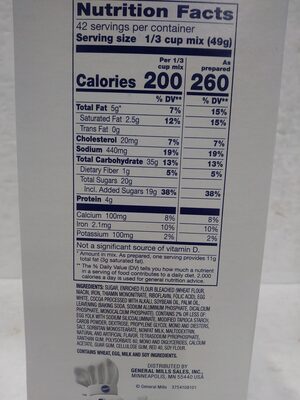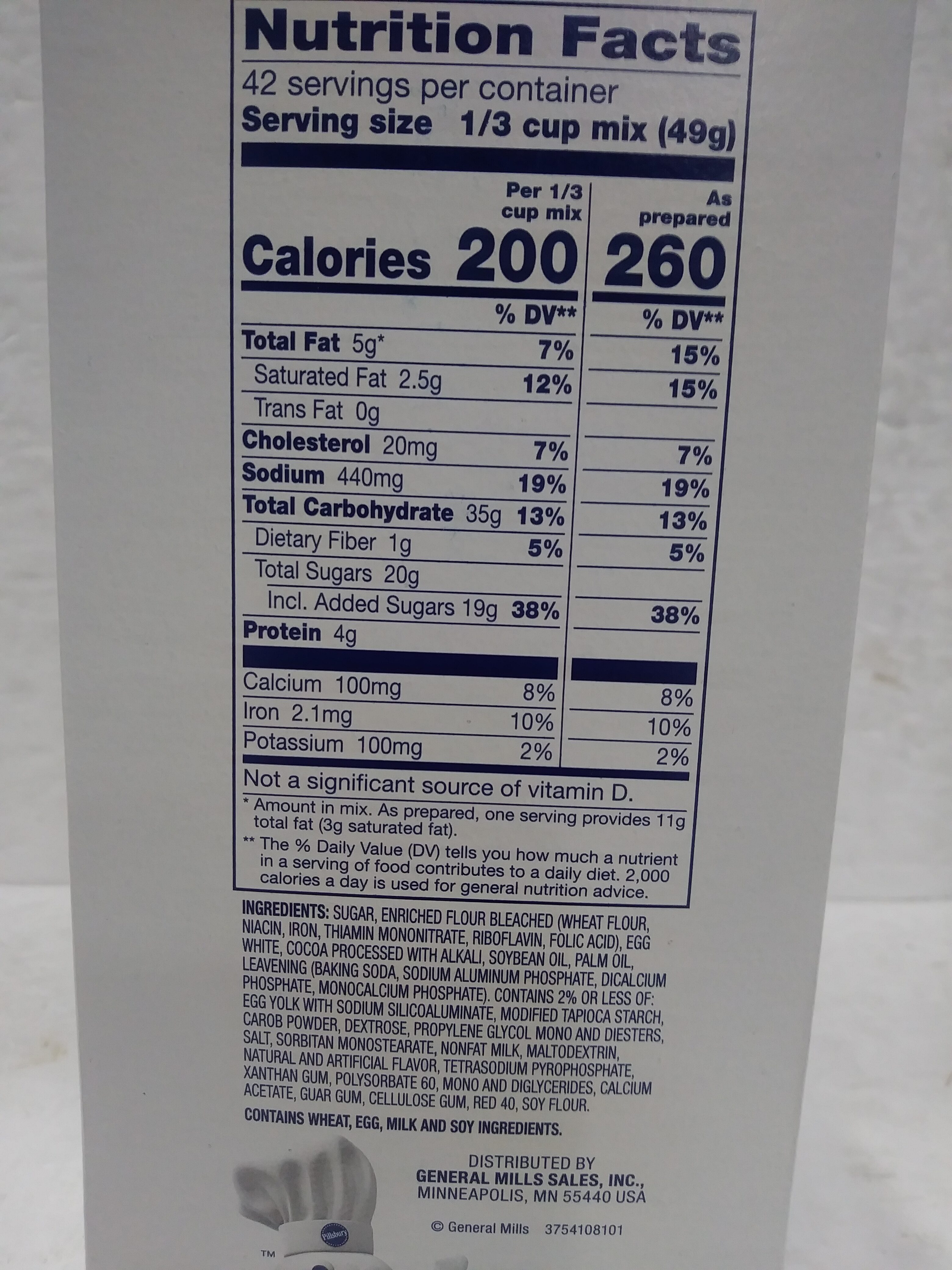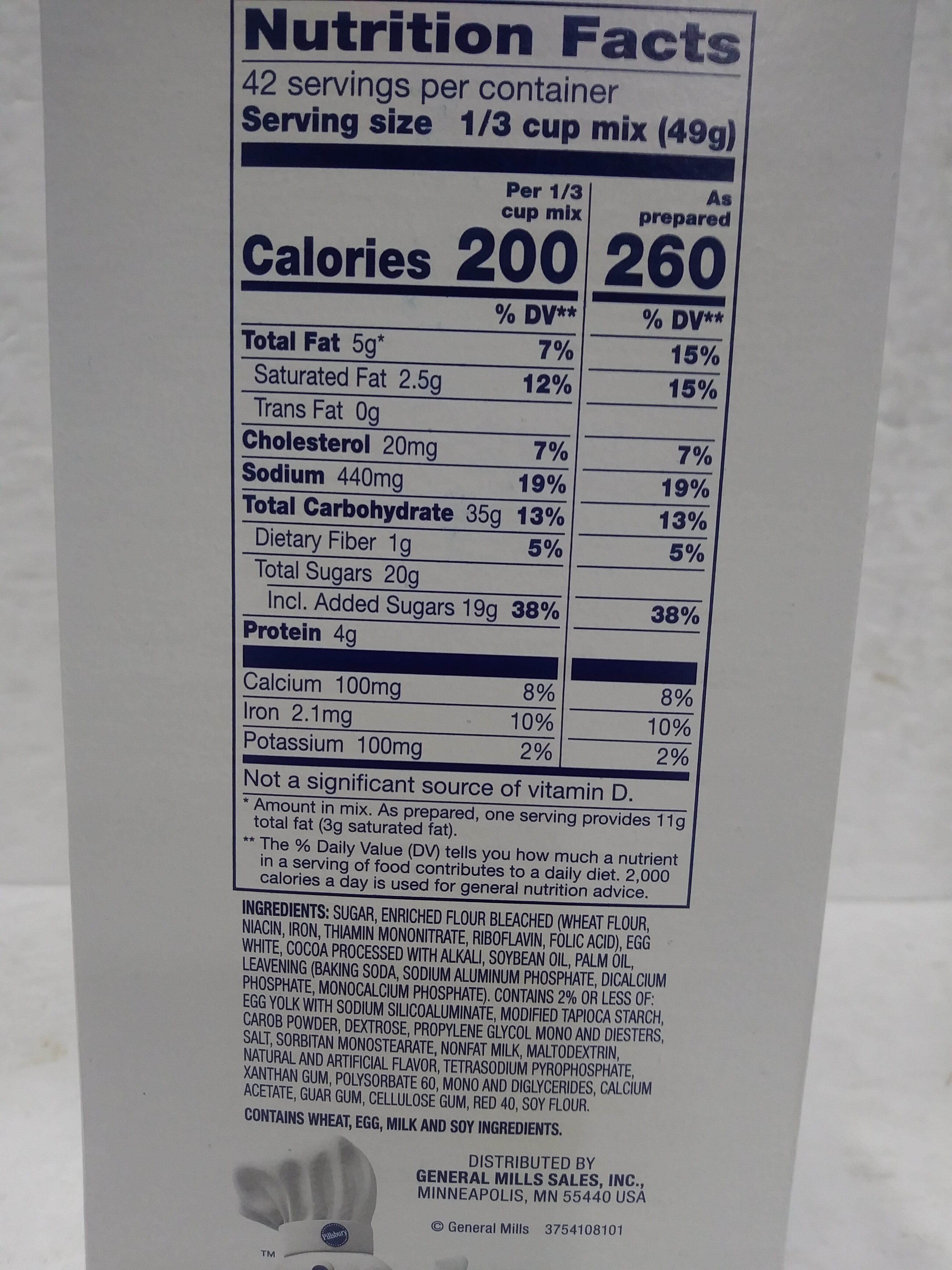Bakers Plus Devil's Food Cake Mix - Pillsbury - 72 oz (4 lb 8 oz) 2.04 kg
This product page is not complete. You can help to complete it by editing it and adding more data from the photos we have, or by taking more photos using the app for Android or iPhone/iPad. Thank you!
×
Barcode: 0018000113897 (EAN / EAN-13) 018000113897 (UPC / UPC-A)
Common name: Bakers Plus Devil's Food Cake Mix
Quantity: 72 oz (4 lb 8 oz) 2.04 kg
Packaging: Cardboard box, Plastic Pouch
Brands: Pillsbury, general mills
Categories: Snacks, Sweet snacks, Biscuits and cakes, Cakes, Cooking helpers, Dessert mixes, Pastry helpers, Baking Mixes, Cake mixes
Origin of ingredients: United States
Manufacturing or processing places: United States
Countries where sold: United States
Matching with your preferences
Health
Food processing
Additives
Ingredients analysis
Environment
Packaging
Transportation
Threatened species
Report a problem
Data sources
Product added on by houstonfoodbank
Last edit of product page on by packbot.








